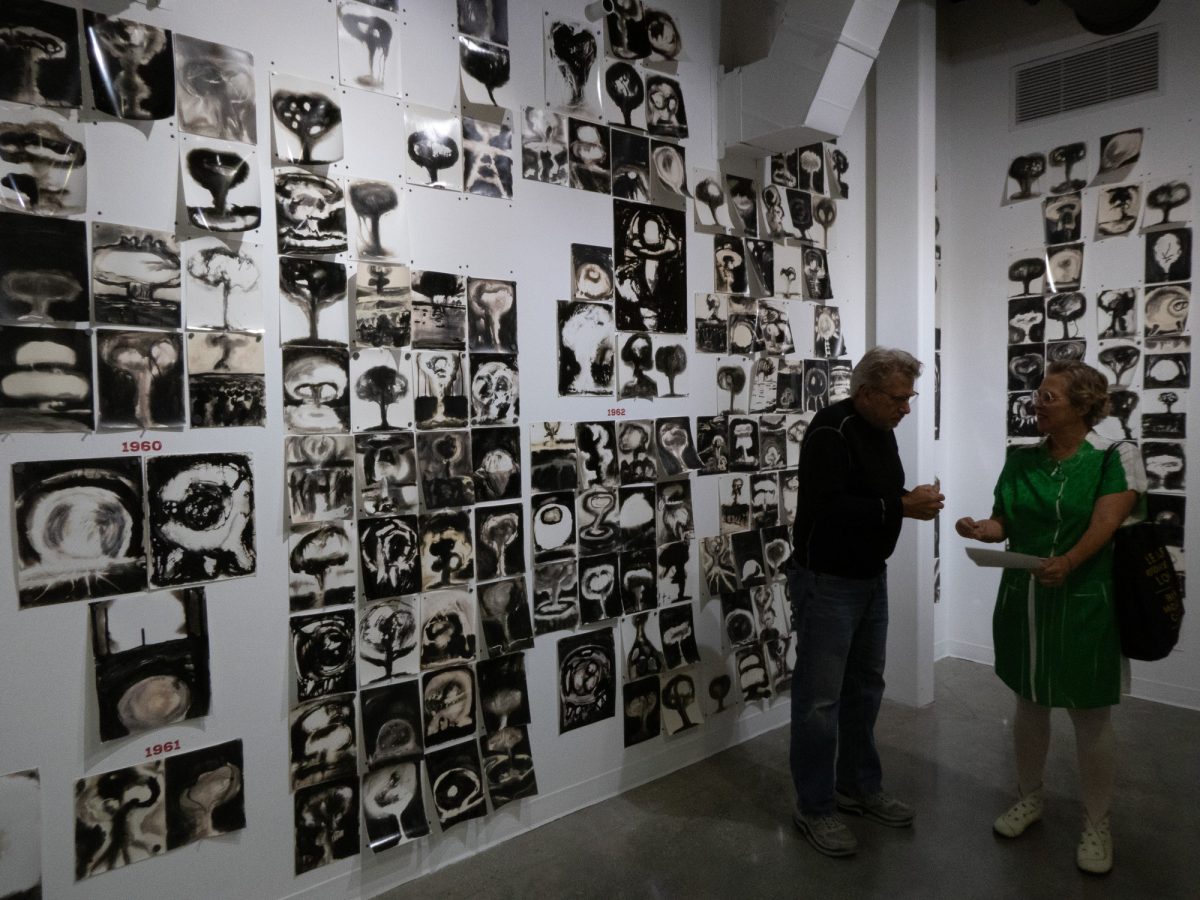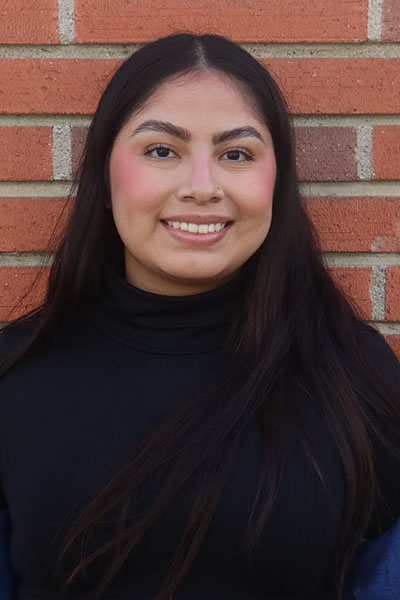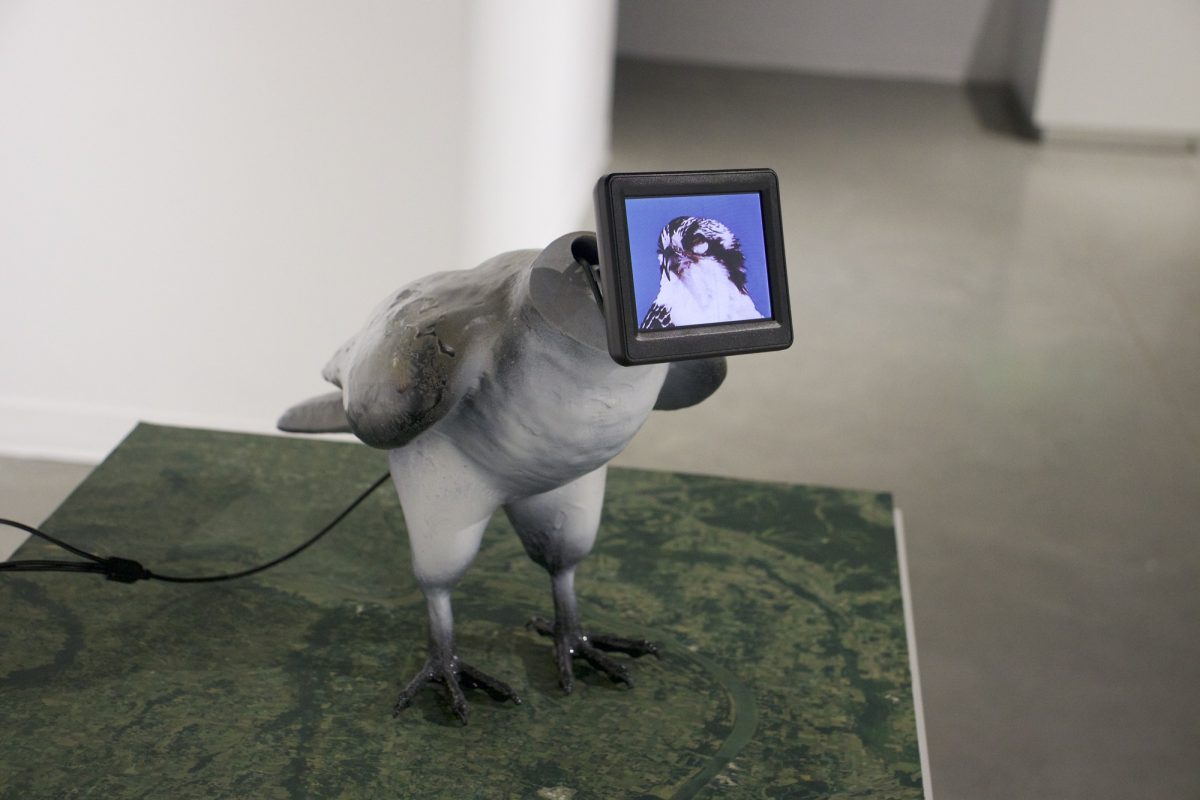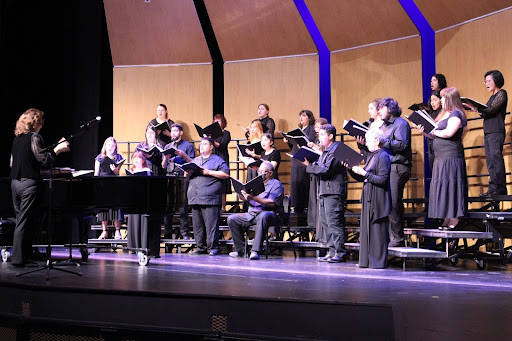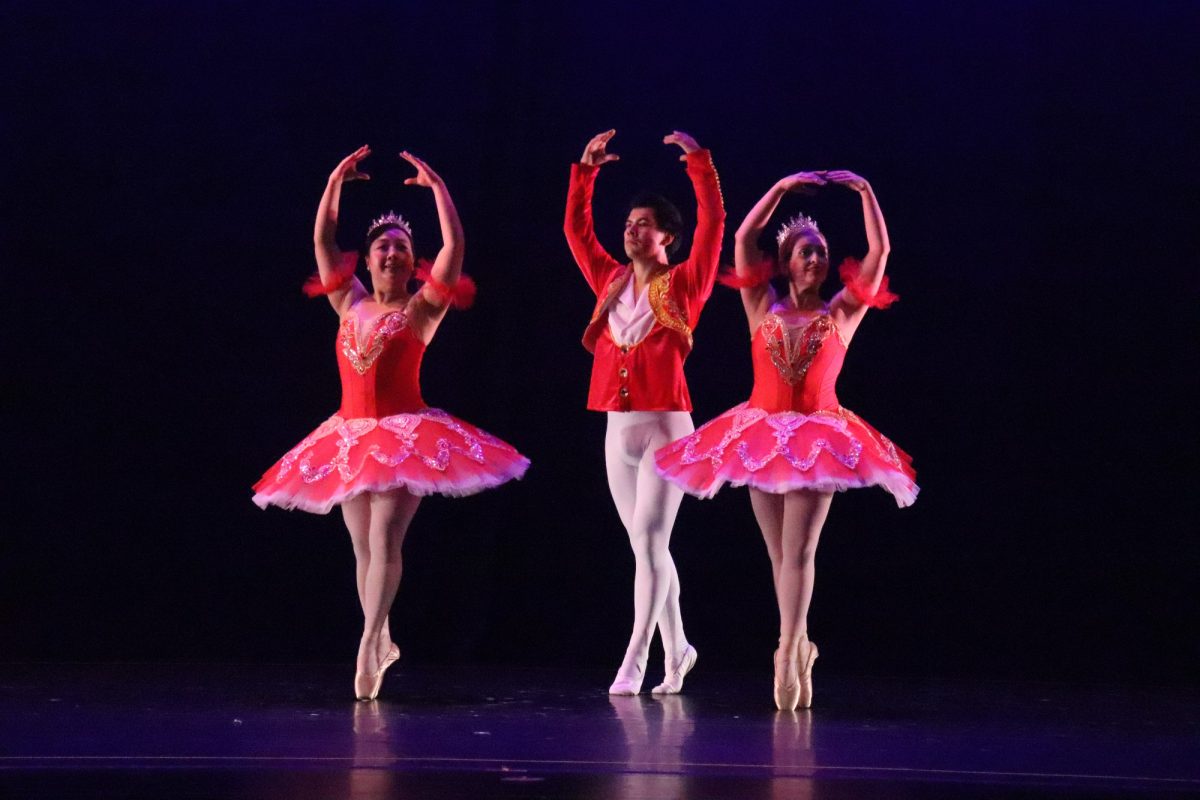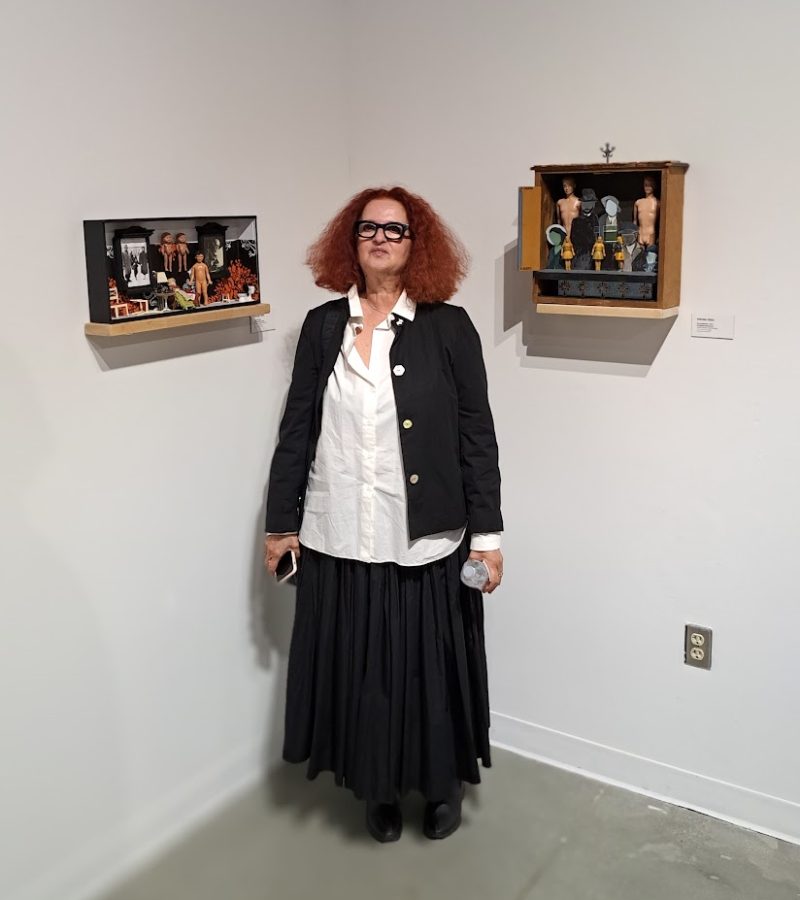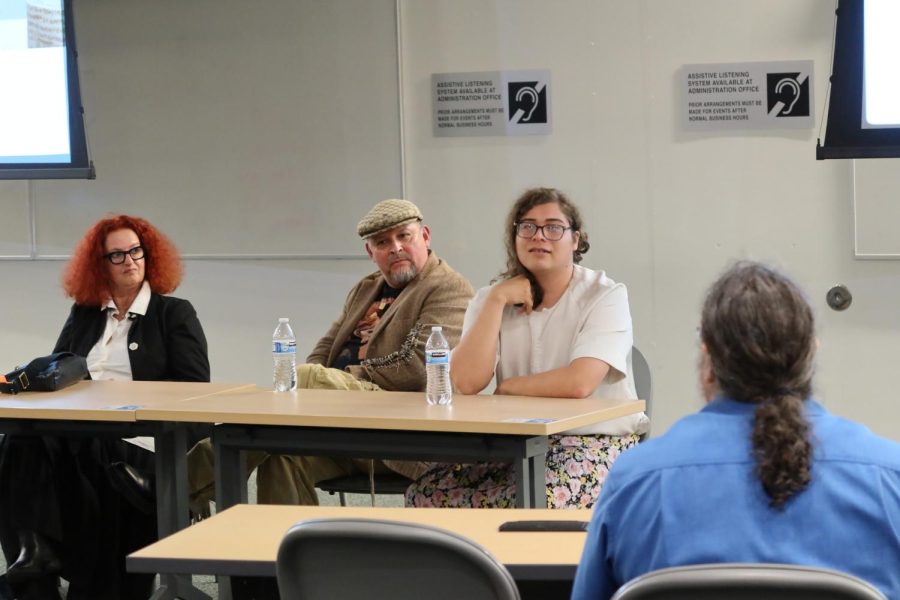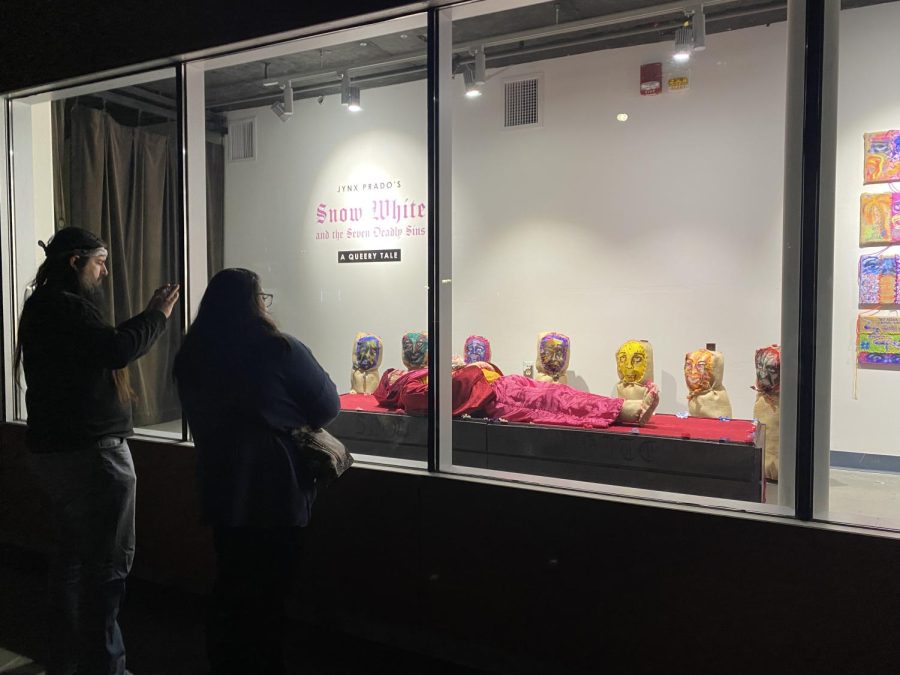The Cerritos College Art Gallery is currently showcasing the art of two sets of groups that represent the traumas and dangers of radioactive contamination.
The main and window galleries hold the art of the solo artist Elin O’Hara Slavick meanwhile the projection rooms hold the art of the recently formed female artist collective SWANS (Slow War Against the Nuclear State) which also includes Elin O’Hara Slavick, Nancy Buchanan, Judith Dancoff, Jane Chang Mi, Hillary Mushkin, Sheila Pinkel, and Lucy HG Solomon (Cesar & Lois).
They held their opening reception in the Fine Arts building on Oct. 30 where each of the artists went up to explain the amount of research it took and how they found they could relate to the pieces.
In the Main Gallery, Slavick presents an installation of 528 photo-chemical drawings, each resembling atomic mushroom clouds, one for every known atmospheric, above-ground nuclear test conducted globally to date.
The images were created by using the process of drawing with a combination of developer and fixer on expired photo paper, which she had found boxes filled within a Caltech darkroom. Each photo had its unique texture and tones varying from matte to glossy, with some being made from paper or plastic.
Slavick had been a professor of photography at the University of North Carolina at Chapel Hill for over 20 years. She is currently an Artist-in-Residence at the UC Irvine College of Health Sciences, having previously been an Artist-Fellow at Caltech during 2022.
When asked about what inspired her to begin these series, she expressed how she has always been an activist since her childhood.
“I grew up in a really activist family so I grew up as a kid going to the town square to remember Hiroshima on Aug. 6 every year, so I grew up with this in my consciousness…,” said Slavick, “And then when I was in Caltech doing research connected to the nuclear, I discovered that Caltech was really involved with [Little Boy and Fat Man].”
Just like Slavick, we found that the fellow artists in the SWANS collective also have a similar story as to what inspired them to express their emotions over such a topic.
They had fathers who also worked in the nuclear industry before and after World War II and parents who were activists against nuclear annihilation.
Solomon went over an experience that also got her inspired with this series, “My family history with a mother who was an activist in the nuclear field where she exposed me at a very young age to the negative aspects of nuclear energy and radioactive waste sites. So that was one formative aspect that also connected me to these remarkable women.”
Solomon’s work was also inspired by another set of artwork she had worked on with her partner Cesar Baio, the Allochronic Cycles.
On display, there were suitcases carved with a dot matrix-like map, each representing areas in Chernobyl that were contaminated by radiation and another one with the same display but for blueberries that demonstrated can contain radiation for another 50 years.
It goes to show that the impact of these nuclear annihilations continues for plenty of years without it necessarily being visible to the naked eye.
The artwork will continue to be showcased until Dec. 8, so be sure to stop by to admire their work as artists.


